Exploring New Waters: How to Find New Places to Fish and Have A Successful First Trip
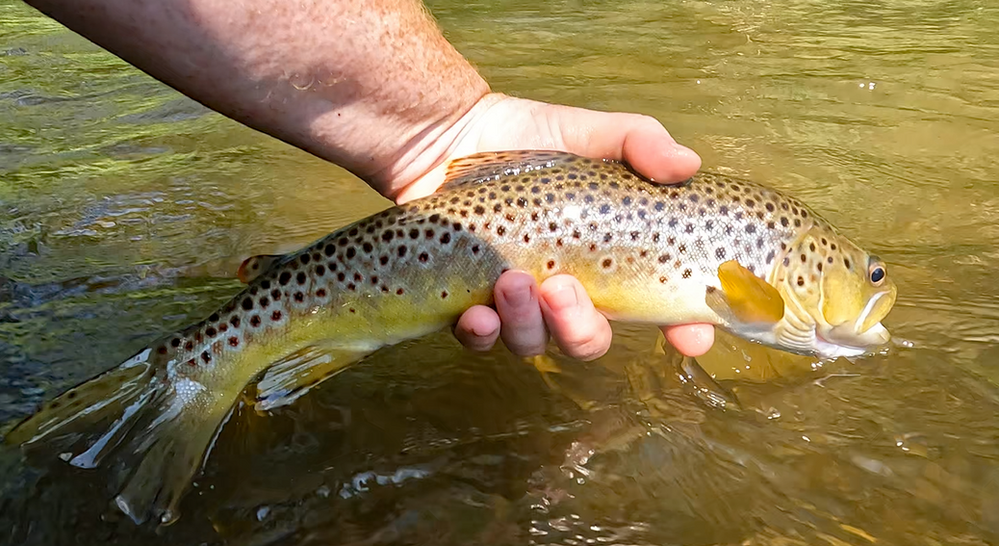
Many times over the years, I’ve talked with people who said they’d fish new waters but they don’t know where to start or even how to find new places to fish. They’ve read great things about a particular stream or river but have no clue about access, stream conditions, what fly hatches might be there, or where to try first. After all, most people don’t like a wild goose chase — except me; I’m always up for a wild goose chase — and want their free time to be as productive as possible. This is exactly why most fishermen stick to familiar waters and save those bucket list streams for “some day.”
However, I’d argue that the only way to truly improve your skills as an angler is to fish a variety of waters. Exploring new rivers and streams is vital to growth. You can become an expert on a single stream, even if it’s a technical piece of work like Spring Creek, but to be able to catch fish anywhere there’s fishing to be done takes experience. And some of those skills can only be learned through the challenge of figuring out unfamiliar places.
Every year, I fish 20-30 new streams and rivers. I love exploring new waters! When I’ve identified a stream or river (or even lake) that I want to visit, I have a series of steps I take that help me find new hotspots and consistently get into fish right away. These steps ensure that I am prepared and have everything I need to succeed on that first trip to a new stream or river.
For the sake of organization, I’ve broken these up into two sections:
- Part 1 will discuss how I go about finding places to fish and learning new water.
- Part 2 will discuss tips on how to make sure your first trip is a success.
Hopefully these will make your first trip, or your next, more productive, too.
After you go through this list, please drop a comment below and let me know what resources you rely on the most when planning your fishing adventures!
Part 1 - Finding New Places to Fish
Books and magazine articles have always been inspirations for me when looking for streams to put on my bucket list. Stream books for individual states can be a great way to start planning your next potential trip. For Pennsylvania, books such as Keystone Fly Fishing (2017) is an awesome resource, and so are similar books by Charles Meck (1989), Dave Wolf (1999), Dwight Landis (2000), and Tom Gilmore (2016), all of which also cover PA. You can usually find similar books for other states, too.
These are all great references, but be aware of their publication dates (in parentheses). Things change very quickly in today’s society, especially in regards to access. Every year, we lose access to key sections of streams and rivers. Also, regulations change. Every year, new sections are added to the Delayed Harvest Artificial Lures Only program, given Class A status, or even added or subtracted from the stocking list for a variety of reasons.
However, these guides all provide quality background information about each destination. For many waters you can learn fascinating history, insights into how to fish them, and when might be the best time to plan a trip. These guides serve a fundamental role in laying the groundwork for fishing these places for the first time.
Maps and Access
The biggest hurdle to fishing any new water is simply finding a place to safely park and access the stream. Once I know where I want to fish, I consult maps for adjacent public lands. State Game Lands, state forests, and national forests can all provide quality access to streams. However, not every stream flows through or near enough to public lands. In some cases, community parks can provide excellent access. Almost every downtown has a community park, and they’re often located right next to a stream.
I also look for rails to trails and other types of hiking and biking trails which usually have nearby trailheads. These are great places to access even if they sometimes mean a little bit of a hike to the water.
One of the best resources I’ve found for locating access points is onX Hunt. Although technically designed for hunters, onX has search features that allow you to quickly locate public lands and access points. I often have the onX app open on my smartphone as I’m driving along a stream or river for the first time and frequently pull over to study various stretches that may flow away from the road. Other similar apps can also prove valuable for learning new waters.

Stocking Lists
Stocked waters are a lot easier to figure out. The trout stocking list produced by the Pennsylvania Fish and Boat Commission is an excellent resource for learning new water. These lists provide the GPS coordinates for the beginning and end of each stocked section, and many times the PFBC will post signs that say “Stocked Waters” or “Fishing Permitted” along those sections. Also, there are typically numerous turnouts along these stocked sections that provide good access for both anglers and stocking trucks.
Stocking lists are great for locating special regulations waters in each county, too. I’ve discovered more than one Delayed Harvest Artificial Lures Only section or Fly Fishing Only section just by randomly perusing the stocking lists for each county, or even the streams listed in the regulations book. Sometimes seeing that a particular county has a DHALO is enough to get me thinking about a new adventure. From there, I try to find information in one of the stream guides on my bookshelf or do an internet search to see if anything has been written about that particular stream. More about using the internet in a bit, though.
USGS Gauges
The U.S. Geological Survey website is a great place to learn about water flows for most watersheds in the country. Simply do a search for “USGS (insert stream name)” when you want to find out what current water flows are and how they compare to the 100 year average.
Many streams — Pine Creek in northcentral PA is a great example — have multiple gauges along their length. Search results will reveal gauges for Pine Creek at Cedar Run and Pine Creek at Waterville. Always reference the gauge closest to the part of the stream that you want to fish in order to get an accurate feel for what conditions you’ll encounter.
USGS stream flows are important because they tell you what is “average” for any particular waterway. The closer the flows are to average, the more accurately they’ll help you predict what to expect when you go there. Most articles and stream guides are written based on normal circumstances and conditions for that particular water. The farther you get from normal flows, the less accurate those articles and stream guides will be, unless they specifically address extremely low or extremely high flows.
Knowing the flow is useful knowledge when planning the trip, but especially useful for planning a return trip. You’ll then be able to look at the gauge and have a really good idea about how to prepare for the next adventure based on what conditions were like on the first visit. For this reason, it helps to take detailed notes about each excursion, so that you have something to reference in case you want to go back.
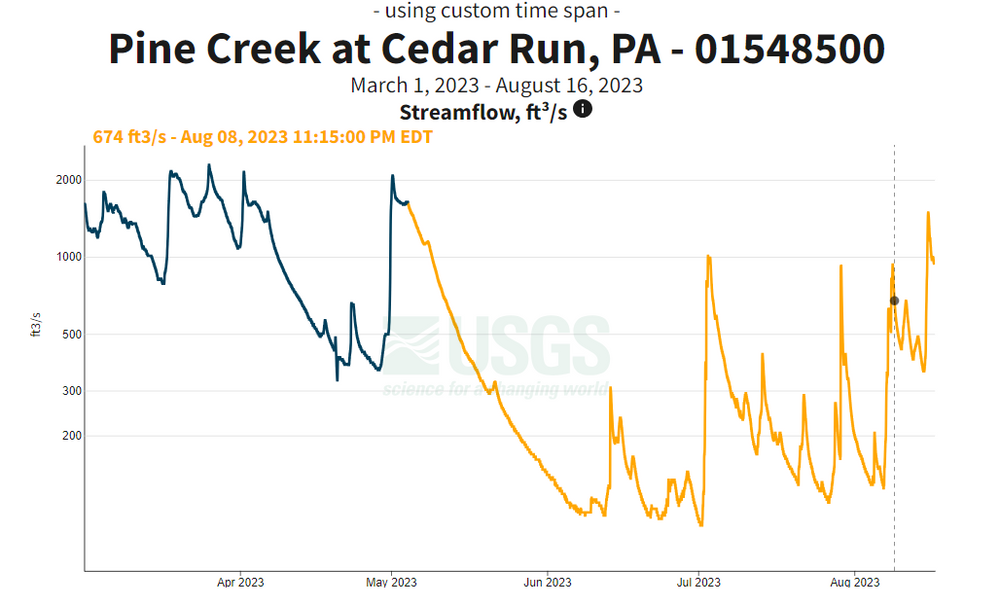
Local Fly Shops
This is an obvious choice for gathering more information, but I only contact them after I’ve learned as much about a river or stream as I can on my own. The reason for this is twofold:
First, I don’t want to be influenced by them. Years ago, I wanted to fish the Mad River in Ohio and was really excited to plan a trip. I called a local fly shop and they talked down on the stream so much that I decided not to go. Looking back, I wish I had gone anyway and figured it out for myself. I had a similar situation when planning to fish Letort Spring Run for the first time. I visited a local sporting goods to inquire about the stream and they told me I should go elsewhere because I’d never catch anything on the Letort. Fortunately, I went anyway, and I caught trout and had an awesome trip — and more importantly, I crossed a stream off my bucket list!
My point here is that I don’t want the person who answers the phone in the fly shop that day to persuade me one way or the other about whether to go or not just because they happen to be in a bad mood. I just want them to provide more information to go with what I’ve already learned about a place.
Second, I only contact fly shops after I’ve learned enough about a place that I can get extra value from whoever answers the phone that day. I want to have a good sense of which section of river I want to fish and a general idea of access points. This allows me to ask more pointed questions such as “would the access on Easy Street be a good one for this time of year or would you suggest somewhere else?” Or perhaps a question such as “Is Pine Creek at Cedar Run still safe to wade when it’s running at 2,000 cfs?” Having enough foundational knowledge of a stream will help you get the most out of a conversation with any fly shop. After that, I can then pick their brain about hatches and other advice for making it a successful trip.
And here’s the most important part: when you visit that area, stop by the fly shop and introduce yourself. Remind them of when you called and asked about a certain location. Buy something to show that you’re supporting their business, and as you’re checking out, ask if they have any suggestions for where to fish that day. More often than not, this is how you’re going to get the most value from the folks behind the counter. It’s a win-win situation!
On the other end of the spectrum, if you’re just calling to fish for information (pun intended!), you’ll likely get a canned answer. They’ll direct you to the same access points that they tell everyone else about, if they offer any suggestions at all. Or they’ll do like the shops I mentioned above and make you want to just stay home.
Online Sources
I put this one last because it’s the one I utilize the least. Yes, there are many great online sources, but nowadays it’s difficult to find one that is credible. Always be aware of which ones you’re using as a reference!
That’s something I take great pride in here on Dark Skies Fly Fishing. I have personal experience fishing every single stream written about on this site, and that includes every stream listed on the Stream Reports page. Not every website can say that, and here’s why: many websites are just adding stream information in order to boost their SEO and Google rankings.
Example: When you search for “fly fishing First Fork Sinnemahoning Creek”, numerous generic websites populate the results. Although some of them might be helpful, such as this website (hopefully!), you can bet that at least 99% of the time, the people who wrote the content on those other sites have never even seen First Fork let alone fished it. How do I know this? Because almost every single one of them includes the wrong information about where the stream originates as well as other important information about access! One website says it flows through Cameron and Clinton counties (wrong!) while another says it flows around the town of St. Marys (double wrong!) and several others say it begins in Driftwood where Bennett Branch and Driftwood Branch meet (triple wrong!)
And this is only one example. These same websites have pages devoted to literally thousands of streams. Can you imagine how much faulty information is out there on these sites? Their goal is to show up in searches, get clicks, and sell products through affiliate links, not to provide anglers with accurate information to help them plan a trip. If you can pull something from these sites, that’s great, but don’t trust them as reliable sources unless they can offer you insights from their personal experience, which is what I’ve always done here on Dark Skies Fly Fishing.
I don’t mean to go into excessive detail here, but this reinforces the importance of checking and cross referencing sources on the internet. And the same can be said of social media, chat rooms, and forums. There are so many trolls on these platforms who delight in leading you astray. Taking nothing that they say as truth unless you can back it up with further research.
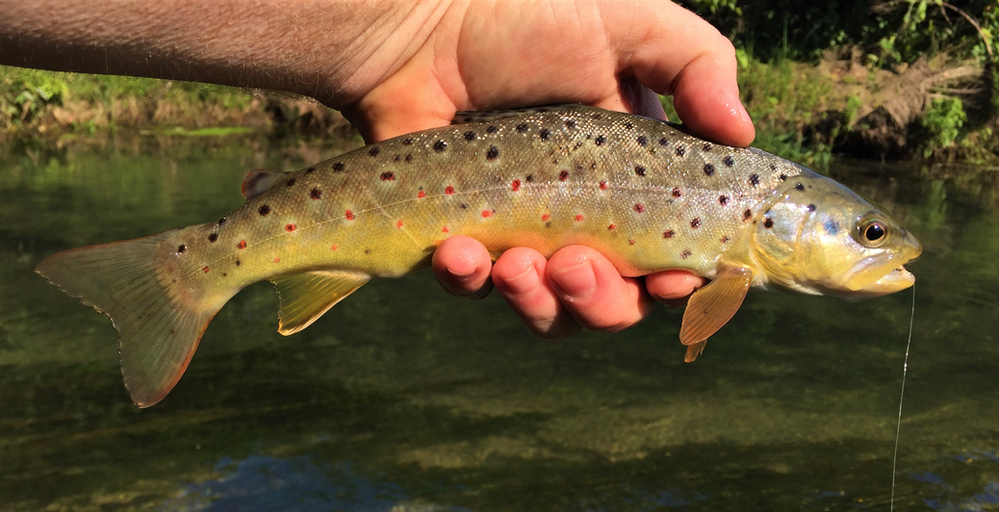
Part 2 - First Trip Success
Timing is Everything
If possible, do not “write your plans in stone.” Be flexible with the timing of the trip because, let’s face it, timing is everything. Bad weather can kill the fishing quicker than anything, and sometimes you just can’t get a sense of what the weather will do until you’re a few days from a trip. Several times over the past year, I pushed a fishing excursion back a week to correspond with better weather or better flows, and I know without a doubt that I had a better trip because of it.
When most people think of bad weather, they envision thunderstorms and cold fronts. In my experience fishing wild brown trout streams, though, bad weather is a hot day with a cloudless sky and relentless sunshine. Sure, if it’s winter time, then a warm, sunny day can be just the ticket to get those fish up and feeding. But for the most part, you’ll have more luck timing your trips to correspond with overcast and/or light rain. On stocked trout streams, this doesn’t seem to matter quite as much.
Of course, not everyone has a flexible work or home life schedule and must make do with whatever situation is presented. Sometimes, no matter how much you prepare and do your homework, luck will play a role.
Make it Familiar
Okay, it’s time to get on the water! You’ve done your homework and know exactly where you want to go. Here’s what I do next.
After I know where I want to fish and how to access it, I look for types of water that I typically have success fishing. I think this is the biggest and most overlooked aspect of exploring new water. You’ll always do better when you can make it familiar.
We all have certain water types that we prefer to fish and that we feel confident fishing. For instance, my buddy Justin loves to Euro nymph the riffles and runs and generally avoids deeper pools. I’ve watched him walk right by what I consider juicy water in favor of stretches that I would likely pass up. But it works for him, and at the end of the day our catch totals are usually very similar.
So if you’re good at nymphing the deep runs on your home stream, look for that same type of water on the stream you’re fishing for the first time. Trout will likely be holding in approximately the same positions even though it’s an entirely different water, different county, or different state. Trout are trout, after all, no matter where they live.
Fishing familiar water types means that you can rely more on previous experiences to read the water and focus more on presenting your flies to where you know trout should be. For me, it also builds confidence because I know I can catch fish in that specific water type at home, so I should be able to catch them on new streams, too.

Look for Isolated Water
Generally speaking, I avoid fishing directly at access points. Sometimes you can get into fish here, but it’s rare. These fish are likely the most educated fish in the whole stream, and while I may hit it quickly just for the sake of saying I did (and hoping to get lucky and pick one up right off the bat), I can usually find better water, and less finicky fish, in harder to access stretches.
I look for where streams flow away from the road or trail. This can be hard in urbanized areas, of course, but even then I’ll look for any spots that involve a little bit of a walk. As a general rule, these will be the less pressured parts of any stream, relatively speaking.
Isolated water means more than just back stretches, though. You can sometimes find isolated water right at public access points, but it requires reading the water and figuring out the little pockets and holding lies that others may miss or that others avoid because of overhanging trees, structure, etc.
This reminds me of a pool on Yellow Creek in Bedford County. One May day, I watched angler after angler fish this pool. Very few of them caught trout. From sun up until mid-afternoon, it was a steady flow of angler traffic on this pool. By the time I got there, it was three in the afternoon, the hottest part of the day, and I figured my odds of success were slim.
As I nymphed the pool, though, I realized there was a little ledge near the head of the pool and figured my fly was probably floating right over the drop off behind it. So I put on extra split shot above the fly, and when I thought I’d dragged the fly to the edge, I dropped my rod tip and let the fly roll off the ledge and fall into the deeper pocket that I assumed was below it. Immediately my line twitched and I set the hook on a 20-inch wild brown that put up one heck of a fight. Other anglers watched in awe as I landed the beast, snapped a few pics, and released it. This is a perfect example of finding isolated water — that deep pocket behind the ledge — in a heavily-pressured pool that every other angler had likely overlooked.
Talk to Locals
If you meet someone in the parking lot who’s packing it in for the day, ask them how they did. Also, don’t be afraid to tell them it’s your first time fishing there. In fact, I ALWAYS make a point to let them know if it’s my first trip there. They will be much more likely to point you in the right direction or offer advice about fly selection if they know you’re just learning a place or just visiting. It’s a lot harder to get information from someone if they think you live just down the street!
Of course, this doesn’t work everywhere, and results vary on a case by case basis. But I can think of several times that a casual conversation in the parking area led to a great afternoon on the water. For that, I will always be grateful, and it’s one of the main reasons that I enjoy sharing with readers my experiences fishing many of the streams in this region.
When exploring new waters, I start out with flies that I’ve used successfully on my local waters. In other words, I tie on my confidence flies. For me, that means tying on a Sexy Walt or a Woolly Bugger, depending on the situation. These patterns will catch fish anywhere. Only after the trout prove to me that they won’t eat either of these flies do I start exploring other options.
Of course, it’s always wise to consider what’s happening around you. If there’s a hatch of Grannoms going on, for instance, it would be wise to start with some type of caddis pattern underneath if fish aren’t feeding on the surface.
Turning over rocks to see what nymphs are present can also be helpful, but not absolutely necessary. A better tactic is to carry a seine of some sort and try to get a sample of what is actually floating in the water column. These are the bugs the trout are typically feeding on, not the ones tucked under the rocks.
But what trumps all of this, in my opinion, is simply fishing with confidence. Fish like you know you’re going to catch fish. When I played high school baseball, we sold t-shirts as a fundraiser. The slogan on the shirts was “Winning is an Attitude.” No truer words have ever been written about sports or fishing.
Fishing with confidence means you’ll be more open to making the adjustments needed to be successful. I meet too many anglers who lament not catching anything and simply blame it on their lack of skill or that they “just didn’t have what the trout wanted today.” Don’t adopt this mindset. Rather, go into it with the mindset that you can catch trout anywhere, and you’ll keep experimenting until you figure out what works. Embrace the challenge of figuring out new waters.
Fishing new waters — and catching fish there — can help boost your confidence like nothing else. Every new water has the potential to teach you new skills and techniques that you can take home to be a more successful fisherman on your local waters.
The steps outlined in this article have helped me find new places to fish and, more often than not, find success my first time there. I hope they help you find new waters to explore and have success, too.
Did You Enjoy Reading About How To Find New Places To Fish?
Sign up for the free Dark Skies Fly Fishing newsletter and receive more tips, stories, updates when new articles and videos launch, and discount codes for purchases made in the Online Store.
Sign Up NowCheck Out The Flies Mentioned In This Post!
-
Dry Flies
X Caddis
Rated 0 out of 5$1.65 Select options This product has multiple variants. The options may be chosen on the product page -
Flies
Woolly Bugger
Rated 0 out of 5$1.65 Select options This product has multiple variants. The options may be chosen on the product page -
Flies
Sexy Walt
Rated 0 out of 5$1.95 Select options This product has multiple variants. The options may be chosen on the product page

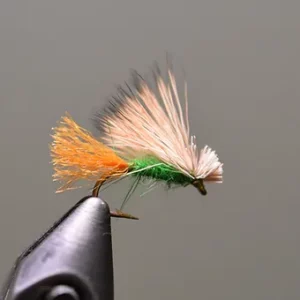

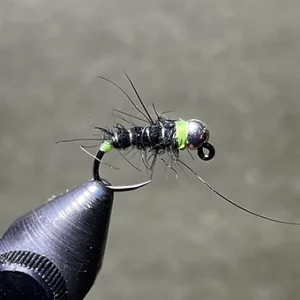

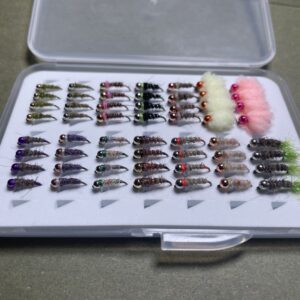
I’m genuinely impressed by the depth of information provided. As someone who often hesitates to try new fishing spots, your guide not only inspired me but also equipped me with practical steps to venture out confidently.
Your discussion on utilizing local fly shops resonated with me. I recall a time when I was hesitant to fish in a new stream in my area. Despite some initial doubts, I reached out to a local fly shop, as suggested in your article. Their insights were invaluable, and the experience was nothing short of remarkable – I discovered a new favorite spot and even made a few local angler friends.
Your emphasis on not letting fly shop opinions deter one’s plans was a valuable takeaway. I’ve learned that forming one’s own experiences is often the best approach, and you’ve articulated this perfectly.
Moreover, the practical tips on identifying and accessing new fishing locations, such as utilizing books, maps, and USGS gauges, are particularly useful. It’s evident that a lot of research and personal experience went into this article, making it a trustworthy resource for both novice and experienced anglers.
Thank you for sharing such a comprehensive and engaging guide. It’s articles like these that not only enrich the fishing community but also encourage us to explore and grow in our fishing journeys.
Looking forward to more insightful articles on your website!